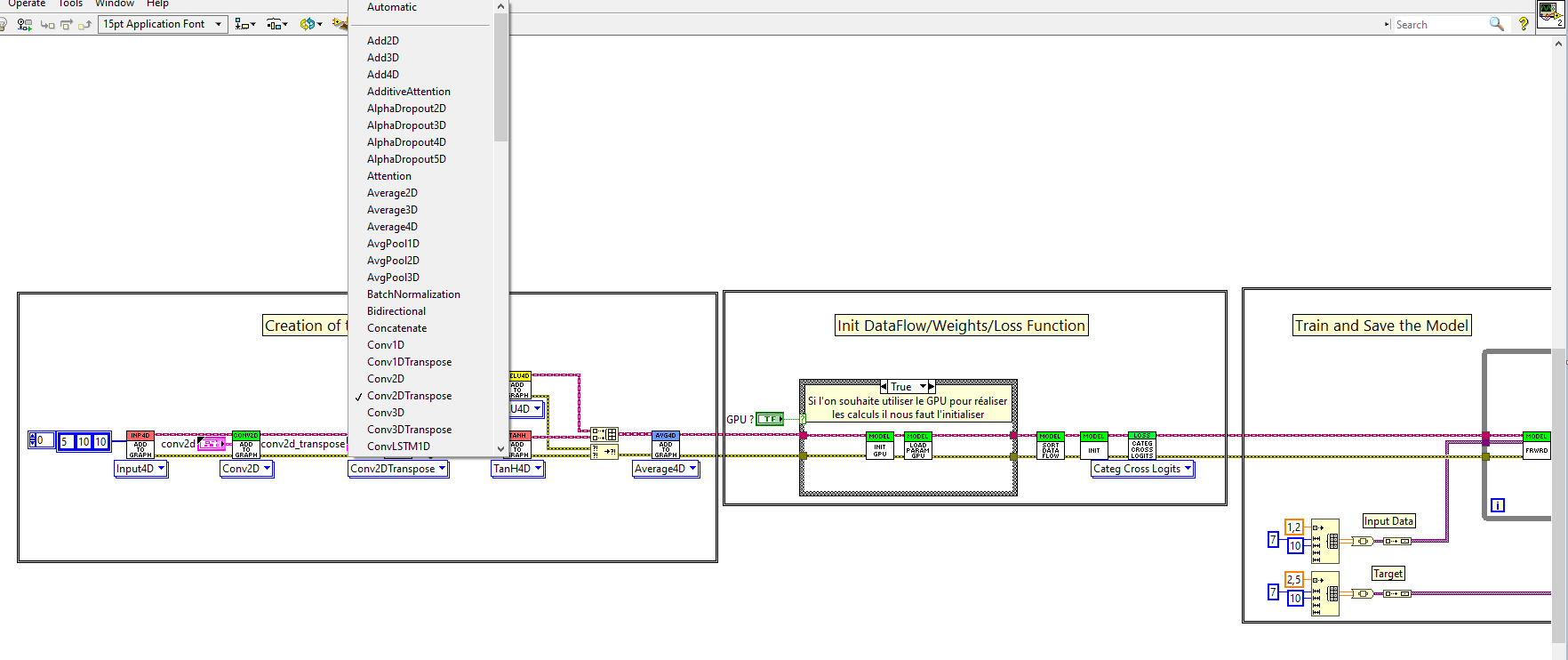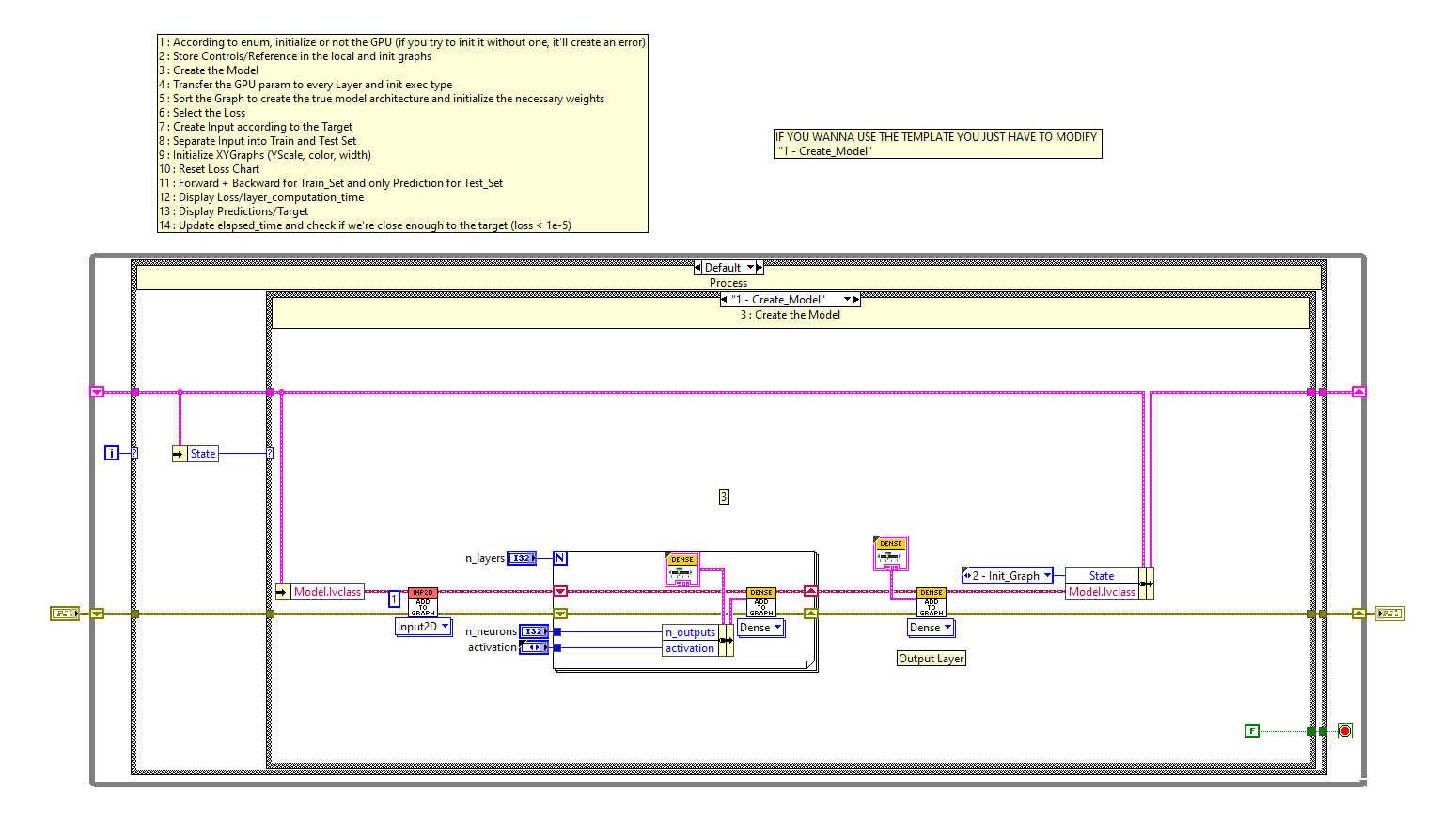Search the Community
Showing results for tags 'convolution'.
-
Dear Community, TDF is proud to announced the coming soon release of HAIBAL library to do Deep Learning on LabVIEW. The HAIBAL project is structured in the same way as Keras. The project consists of more than 3000 VIs including, all is coded in LabVIEW native:😱😱😱 16 activations (ELU, Exponential, GELU, HardSigmoid, LeakyReLU, Linear, PReLU, ReLU, SELU, Sigmoid, SoftMax, SoftPlus, SoftSign, Swish, TanH, ThresholdedReLU), nonlinear mathematical function generally placed after each layer having weights. 84 functional layers/layers (Dense, Conv, MaxPool, RNN, Dropout, etc…). 14 loss functions (BinaryCrossentropy, BinaryCrossentropyWithLogits, Crossentropy, CrossentropyWithLogits, Hinge, Huber, KLDivergence, LogCosH, MeanAbsoluteError, MeanAbsolutePercentage, MeanSquare, MeanSquareLog, Poisson, SquaredHinge), function evaluating the prediction in relation to the target. 15 initialization functions (Constant, GlorotNormal, GlorotUniform, HeNormal, HeUniform, Identity, LeCunNormal, LeCunUniform, Ones, Orthogonal, RandomNormal, Random,Uniform, TruncatedNormal, VarianceScaling, Zeros), function initializing the weights. 7 Optimizers (Adagrad, Adam, Inertia, Nadam, Nesterov, RMSProp, SGD), function to update the weights. Currently, we are working on the full integration of Keras in compatibility HDF5 file and will start soon same job for PyTorch. (we are able to load model from and will able to save model to in the future – this part is important for us). Well obviously, Cuda is already working if you use Nvidia board and NI FPGA board will also be – not done yet. We also working on the full integration on all Xilinx Alveo system for acceleration. User will be able to do all the models he wants to do; the only limitation will be his hardware. (we will offer the same liberty as Keras or Pytorch) and in the future our company could propose Harware (Linux server with Xilinx Alveo card for exemple --> https://www.xilinx.com/products/boards-and-kits/alveo.html All full compatible Haibal !!!) About the project communication: The website will be completely redone, a Youtube channel will be set up with many tutorials and a set of known examples will be offered within the library (Yolo, Mnist, etc.). For now, we didn’t define release date, but we thought in the next July (it’s not official – we do our best to finish our product but as we are a small passionate team (we are 3 working on it) we do our best to release it soon). This work is titanic and believe me it makes us happy that you encourage us in it. (it boosts us). In short, we are doing our best to release this library as soon as possible. Still a little patience … Youtube Video : This exemple is a template state machine using HAIBAL library. It show a signal (here it's Cos) and the neural network during his training has to learn to predict this signal (here we choose 40 neurones by layers, 5 layers, layer choose is dense). This template will be proposed as basic example to understood how we initialize, train and use neural network model. This kind of "visualisation exemple" is inspired from https://playground.tensorflow.org/ help who want to start to learn deep learning.
- 7 replies
-
- 1
-

-
- deeplearning
- pytorch
-
(and 3 more)
Tagged with:



